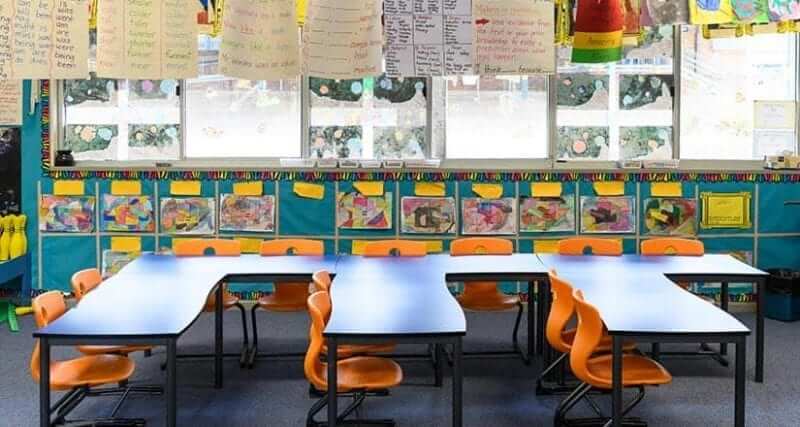Everyone, it seems, is obsessed with (and not a little inspired by) the Japanese household organization consultant, Marie Kondo. If you haven’t heard of her yet, her YouTube videos have thousands of views, she has two bestseller books and a new series on Netflix called Tidying Up. Her mantra, which everyone has quickly adopted into their daily lexicon, is the powerful question, “Does it spark joy?” which means, does this object, this book, this piece of clothing in your hands: does it speak to your heart and provide happiness? If not, thank it for how it served you, then toss or donate. Though we cannot be done with students that do not spark joy in us, we can apply Marie Kondo’s method of tidying, known as the “KonMari method,” to our classrooms in a few easy steps. Here’s how I’m starting to apply it myself:
Create a calm and productive environment
The first thing you should do prior to beginning the tidying of your classroom is to envision what your ideal classroom would look like, and how it would operate. Do not get consumed with how it currently looks or how it functions at the present. Visualize your ideal room, make thatyour goal. Remember, when people begin the tidying process of their homes it takes weeks, sometimes months, to finish; your classroom will not reflect your vision in one day. Stay committed to the tidying process and follow through with your ideal work environment in mind.
Increase your confidence
It is important to trust yourself to make important choices. Don’t second guess yourself. This is yourroom, yourvision, and you are a master of your craft. Relish in what you have achieved and in the confidence of the choices you are making.
Categorize
Begin the tidying process of your classroom by focusing on one category at a time. Typically Marie Kondo breaks her home tidying into the following categories:
- Clothing
- Books
- Paper
- Komono (Miscellaneous)
- Mementos
For a classroom I’ve broken it down this way:
- Papers
- Books
- School supplies
- Student work
Don’t tackle all of your organization at once; pick one focus. One of the misconceptions of the KonMari organization process is that you have to throw away things that aren’t important. This isn’t true. This is where the famous question “does it spark joy?” comes into play. As teachers we are famous for carrying unnecessary items that no longer serve us over from one year to another. We can be consumed with the fear of potentially needing something in the future. The tidying process could end the hoarding cycle we have created in our classrooms. Hold an item, hold a book in your hand and truly reflect: Does this item make me happy? Does it serve me as a teacher? What about my students? If the answer is “no,” get rid of it.
As you tackle each category the mess will increase; it will look worse before it gets better. This is where you have to trust the process and stay committed. Organize things by likeness. For example, keep all of your papers from a unit together, or all the books about World War Two in one stack. Then, within those already broken down sub-categories, organize by size. Keep the items used frequently in places that are easier to access.
Rid but don’t waste
Maybe the items that no longer serve you could serve the other teachers in your building. Consider doing something that teachers on the precipice of retirement tend to do: organize a “yard sale.” Lay out the items that do not spark joy for you in your classroom and invite others to go through those items, allow them to take what they want. Whatever is left can then be thrown away.
Reflect
When this process is over be proud of yourself for creating your calm and productive environment. Don’t forget to show gratitude for what has served you, but in the future remember to always choose joy.
Rebecca Stone has taught 12th grade special education English at Long Branch high school for ten years, she is also an education blogger and writer.





